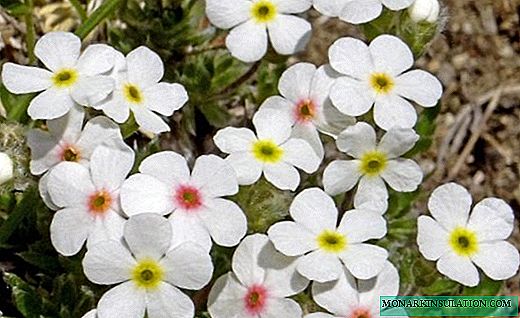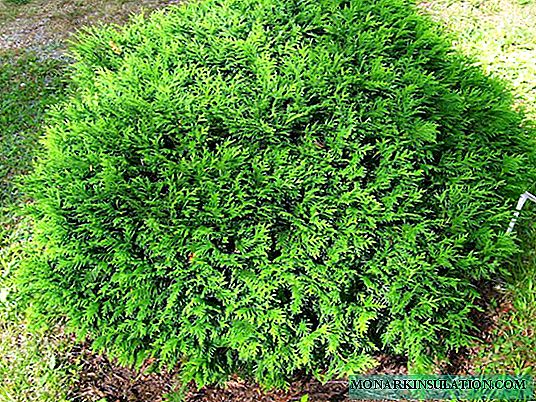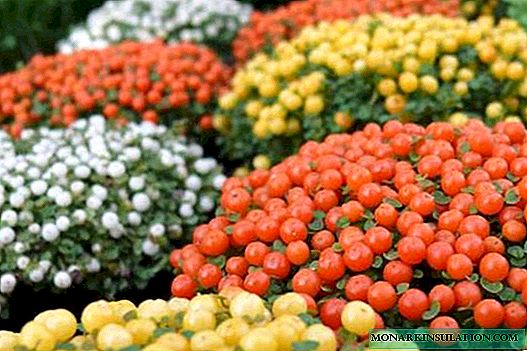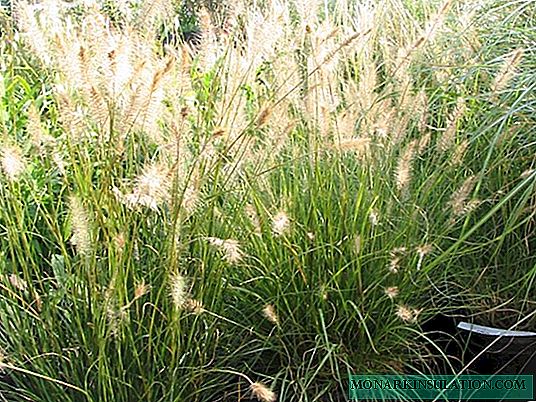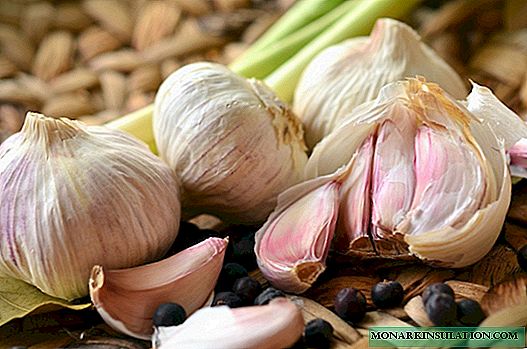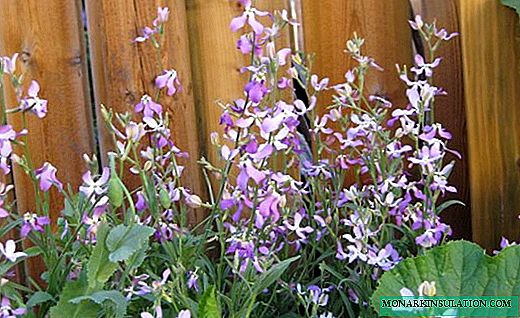Mattiola is a grassy flowering plant that came to us from the Mediterranean. It belongs to the Crucifer family. The appearance of matthiola is rather modest, but the aroma of its flowers is so beautiful that it is often because of it that the plant is allocated a place in the flower garden. They plant it closer to arbors, terraces or windows of the house. Since the flowers open at night, Mattiola is often called "night violet" or "levka."

Plant description
Matthiola is an annual or perennial crop with grassy branched shoots 30-90 cm high. Dense straight stems quickly lignify. They are covered with bare or densely pubescent dark green skin. Matthiola sprouting consists of a large number of soft leaves. Dark green lanceolate foliage with a whole or serrated edge is concentrated at the base and at the bottom of the shoot.
Already at the end of spring, thick racemose blossoms bloom on the tops of the stems. They consist of simple or double flowers with soft rounded petals. The color of the inflorescences can be pink, white, lilac, purple or yellow. Flowers bloom at sunset and are pollinated by nocturnal insects. The air next to the flower bed is filled with a rich sweetish aroma. Plants are excellent honey plants. After pollination, the fruits ripen - small oblate pods. Each contains many seeds of a rounded shape. Seeds are brown or black.


















Types of Mattiola
The genus matthiola includes about 50 major species. More than 600 decorative varieties have already been bred on their basis. Plants can be divided into groups according to height (dwarf, medium, tall), flower structure (simple, double) and other signs. Some of the most popular matthiol are as follows:
Mattiola is bicorn. An annual with a thin, highly branched stalk forms a spherical bush about 50 cm high. The shoots are covered with gray-green petiolate foliage of a linear shape. In June-August, dense panicle inflorescences bloom with simple, four-petal corollas. They are painted in light pink or purple color and exude an intense pleasant aroma. After pollination in small dense pods, small oblong seeds ripen.

Mattiola gray. An annual plant with weakly branched shoots 20-80 cm high. Stems are quickly lignified. They are densely covered with oval or narrowly linear foliage with short pubescence. Simple or double flowers are collected in dense inflorescences on the tops of shoots. They are painted in pink, white, blue, lilac, yellow and dark purple. This type of levkoy blooms in June and preserves flowers until the first frosts. In the south it can bloom even in winter. The fruit, a flat multi-seeded pod, ripens only in cultivars with simple flowers.

Mattiola is fragrant. The height of a perennial herbaceous plant is 20-50 cm. Its stems and leaves are painted dark green and are covered with a long felt pubescence of a silver hue. Foliage forms a thick basal rosette. Sedentary leaves have an oblong shape. In May-June, a loose racemose inflorescence of simple yellow-brown flowers blooms. The buds open at sunset and exude a characteristic strong aroma.

Levkoy cultivation
The main method of propagating matthiola is sowing seeds. In the southern regions, crops can be sown immediately in open ground. Do this in November or April in an open, sunny area. In shallow grooves try to evenly distribute small seeds. Previously, they are best mixed with sand. When the seedlings form 3 true leaves, they are thinned out so that the distance is 15-20 cm.
To get flowering plants as soon as possible, it is recommended to first grow seedlings. In early March, seeds are distributed in containers with a mixture of turf soil and sand to a depth of 5 mm. It is useful to pre-soak them for several hours in a solution of manganese. The soil is carefully moistened and boxes are transferred to a well-lit room with a temperature of + 10 ... + 12 ° C. Shoots appear after 3-4 days, after 2 weeks, seedlings dive in separate peat pots or disposable cups.

Growing seedlings in the greenhouse continues until mid-April. Then, during the week, the flowers are taken outside for several hours to temper them. At the end of April, it is possible to land matthiola in open ground. It is already able to tolerate small return frosts (up to -5 ° C).
Outdoor Care
For planting levkoy, a well-lit, open area is selected. It is undesirable that before this, other representatives of cruciferous plants were grown on it, since the soil can be infected with a fungal infection. Seedlings are planted without damaging the lump of earth to the depth of the root system. The distance between plants should be about 20 cm. Planting is best planned in the evening or on a cloudy day. With denser plantings, black-leg infection is possible. The soil should be fairly loose and fertile, with neutral acidity. Heavy soils and water stagnation are unacceptable.

Mattiola is an unpretentious culture. She needs intense lighting and fertile, well-drained soil. You need to water the plant regularly, but in small portions. Periodically, it is necessary to loosen the soil surface so that a dense crust does not form after irrigation. You should also pay attention to weeding weeds. This flower suffers from the proximity to aggressive plants.
Organic feed Mattiole is not needed. It is enough in the spring to water the planting with a solution of complex mineral fertilizer for flowering. On fertile soils, you can completely do without fertilizing.

Leukemia can suffer from fungal diseases, especially from the "black leg" and "cabbage keel." As a prophylaxis, one should observe the distance and weed the flowers, and also not allow waterlogging of the soil. The most common parasites for the plant are the butterfly cabbage, cruciferous flea and whitewash. Insecticide treatment will help to quickly cope with pests.
Mattiola in landscape design
Mattiola is one of those plants that is grown not for the sake of a bright appearance, but because of the wonderful aroma. Although decorative terry varieties perfectly decorate the flower garden or complement the bouquet composition. In cut, the plant will stand up to two weeks. Mattiola is planted closer to places of rest or the windows of houses, so that in the evenings and at night, enjoy the rich aroma of the Mediterranean coast.
The culture can be used for landscaping balconies and terraces, planting in boxes and containers. The best neighbors in the flower garden for levkoy are lavender, rosemary, decorative wormwood, reseda, thyme, thyme, phlox and ruffle.


